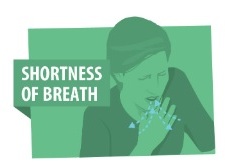Primary Care Providers: Key Role in Managing Dyspnea Symptoms

Primary care providers (PCPs) are crucial in the early detection and management of dyspnea, a symptom characterized by shortness of breath that can indicate serious underlying health conditions. When patients present with dyspnea symptoms, an in-office examination is often necessary to assess the underlying causes. Dr. Panagis Galiatsatos, a pulmonologist and associate professor at Johns Hopkins School of Medicine, emphasizes that all new episodes of dyspnea should be evaluated promptly, particularly if they deviate from the patient’s known health conditions.
PCPs serve as the initial point of contact in the healthcare system, performing essential assessments and coordinating referrals to specialists when necessary. According to Dr. Lijo Illipparambil, a pulmonologist at the Lewis Katz School of Medicine, PCPs are integral in monitoring chronic conditions such as chronic obstructive pulmonary disease (COPD) and asthma. They utilize their longitudinal relationships with patients to identify changes in symptoms over time, facilitating early intervention and shared decision-making strategies.
A thorough physical examination is a key step in assessing dyspnea. This process typically includes checking vital signs, especially oxygen saturation and heart rate. Dr. Illipparambil suggests that additional testing, such as chest X-rays and EKGs, should be conducted based on the patient’s symptoms. Red flags indicating the need for further testing include dyspnea at rest and worsening symptoms over time.
The management of dyspnea also encompasses lifestyle counseling, where PCPs can guide patients on making healthier choices, particularly regarding weight management, smoking cessation, and physical activity. Dr. Trishul Siddharthan of the University of Miami highlights that obesity significantly contributes to dyspnea and can exacerbate respiratory conditions. Effective communication strategies, including motivational interviewing, can enhance patient engagement in their care.
As the frontline in cardiopulmonary care, PCPs not only recognize symptoms but also play a vital role in educating patients about their conditions and potential lifestyle modifications. The collaborative approach between PCPs and patients can lead to improved health outcomes and a better quality of life for those experiencing dyspnea.
In conclusion, primary care providers are essential in the comprehensive management of dyspnea. Their ability to recognize symptoms, coordinate care, and engage patients in their health management is invaluable in preventing the progression of underlying diseases and ensuring timely interventions. As healthcare continues to evolve, the role of PCPs in managing respiratory symptoms will remain critical, impacting patient outcomes significantly.
Advertisement
Tags
Advertisement





